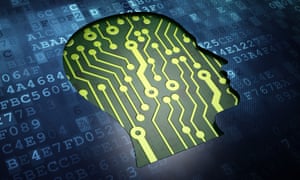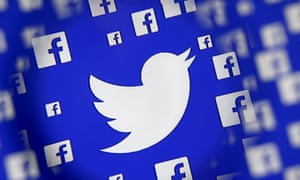Why does David Buckingham mention Owen Jones and his work Chavs: the demonisation of the working class?
In his recent book Chavs,
Owen Jones points to the emergence of a new
form of class contempt in modern Britain. The
working class, he argues, has become an object
of fear and ridicule.
What is the typical representation of young people – and teenage boys in particular? What did the 2005 IPSOS/MORI survey find?
A 2005 IPSOS/MORI survey found
that 40% of newspaper articles featuring
young people focused on violence, crime or
anti-social behaviour; and that 71% could be
described as having a negative tone.
How can Stanley Cohen’s work on Moral Panic be linked to the coverage of the riots?
Stanley Cohen analysed
media coverage of an earlier generation of ‘riots’
– the pitched battles between gangs of mods
and rockers (and the police) on beaches in the
South of England in the mid-1960s. Cohen argues
that the media talked up the disturbances into a
bigger ‘moral panic’. In a moral panic, he writes: a condition, episode, person or group of
persons emerges to become defined asa threat to societal values and interests;
its nature is presented in a stylized and
stereotypical fashion by the mass media;
the moral barricades are manned by editors,
bishops, politicians and other right-thinking
people; socially accredited experts pronounce
their diagnoses and solutions; ways of coping
are evolved or (more often) resorted to; the
condition then disappears, submerges or
deteriorates and becomes more visible.
What elements of the media and popular culture were blamed for the riots?
It was rap music,
violent computer games or reality TV that was
somehow provoking young people to go out and
start rioting.
How was social media blamed for the riots? What was interesting about the discussion of social media when compared to the Arab Spring in 2011?
The rioters were also seen as somehow skilful enough to co-ordinate their actions by using Facebook, Blackberry and Twitter. The Sun, for example, reported that ‘THUGS used social network Twitter to orchestrate the Tottenham violence and incite others to join in as they sent messages urging: ‘Roll up and loot’
The riots generated a huge amount of comment and opinion - both in mainstream and social media. How can the two-step flow theory be linked to the coverage of the riots?
As previosuly explained that thugs influenced the organisation of the riots it's evident that their view influenced many other young teenagers to take part. Also, it's clear that new media have created many
more opportunities for people to have their
say.
Alternatively, how might media scholars like Henry Jenkins view the 'tsunami' of blogs, forums and social media comments? Do you agree that this shows the democratisation of the media?
I agree with the fact that ‘Big Media’ – of powerful, centralised
corporations controlling media – is now
finished: hierarchical, top-down communications
have been replaced by a more egalitarian
approach. But it's useful to consider that new media
are simply providing more opportunities for
ignorant people to mouth off about whatever
happens to have annoyed them that day.
What were the right-wing responses to the causes of the riots?
Amoral youth - amoral,
uneducated, unparented, welfare dependent,
brutalised youngsters took part in the riots. Particularly the idea of the welfare state:
too much permissiveness, he argues, has bred a
generation of young people with no respect for
their elders and betters, and no ‘moral compass’.For some right-wing commentators, it is
parents who are principally to blame for this
situation; while others, such as Katharine
Birbalsingh, blame schools for failing to instil
discipline and respect for authority – especially,
according to her, in black children.
What were the left-wing responses to the causes of the riots?
Such commentators point out that the UK has
one of highest levels of inequality in the Western
world. They argue that it was unsurprising that
most of the disturbances erupted in areas with
high levels of poverty and deprivation. More specifically, they point to the cuts in
youth services (Haringey, the borough in which
Tottenham is located, recently closed 8 of its
13 youth clubs), rising youth unemployment
(which is now over 20% in the 18-25 age group)
and the removal of the Education Maintenance
Allowance. While these are valid arguments, they
also appear to look only to youth as the cause.
What are your OWN views on the main causes of the riots?
In my opinion, I believe that unemployment is to blame for the riots and the closure of community centres. If the youth, especially from working classes, were given the opportunity to have jobs then the riots wouldn't of happened as the youth would be more concerned about work than protesting. There is also inequality and the riots were bound to happen one day but the fact that the death of a black man, Mark Duggan prompted the riots, Although it was meant to start out as a peaceful protest, the influence of social media and promoting the riots caused mass outrage,
How can capitalism be blamed for the riots? What media theory (from our new/digital media unit) can this be linked to?
The link between the rioters and the bankers and
politicians. The rioting, is argued by Peter Osborne (a right-wing writer for Daily Telegraph) states that: "it has become acceptable
for our politicians to lie and to cheat… the
sad young men and women, without hope or
aspiration, who have caused such mayhem
and chaos over the past few days… have this
defence: they are just following the example
set by senior and respected figures in society."
Were people involved in the riots given a voice in the media to explain their participation?
On all sides of the media debate, there was a
rush to instant judgment – or at least instant
opinion.
- Many rioters conceded that their involvement in looting was simply down to opportunism, saying that a perceived suspension of normal rules presented them with an opportunity to acquire goods and luxury items they could not ordinarily afford. They often described the riots as a chance to obtain "free stuff" or sought to justify the theft.
- Despite David Cameron saying gangs were "at the heart" of the disturbances, evidence shows they temporarily suspended hostilities. The effective four-day truce – which many said was unprecedented – applied to towns and cities across England. However, on the whole, the research found gang members played only a marginal role in the riots.
- Contrary to widespread speculation that rioters used social media to organise themselves and share "viral" information, sites such as Facebook and Twitter were not used in any significant way. However, BlackBerry phones – and the free messaging service known as "BBM" – were used extensively to communicate, share information and plan riots in advance.
- Although mainly young and male, those involved in the riots came from a cross-section of local communities. Just under half of those interviewed in the study were students. Of those who were not in education and were of working age, 59% were unemployed. Although half of those interviewed were black, people who took part in the disorder did not consider these "race riots".
- Rioters identified a range of political grievances, but at the heart of their complaints was a pervasive sense of injustice. For some this was economic: the lack of money, jobs or opportunity. For others it was more broadly social: how they felt they were treated compared with others. Many mentioned the increase in student tuition fees and the scrapping of the education maintenance allowance.
What is your own opinion on the riots? Do you have sympathy with those involved or do you believe strong prison sentences are the right approach to prevent such events happening in future?










